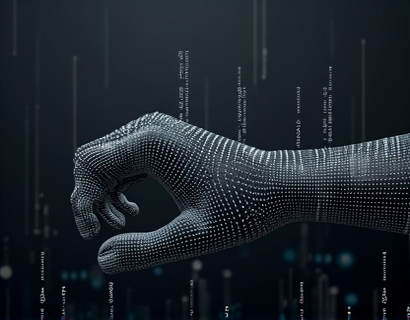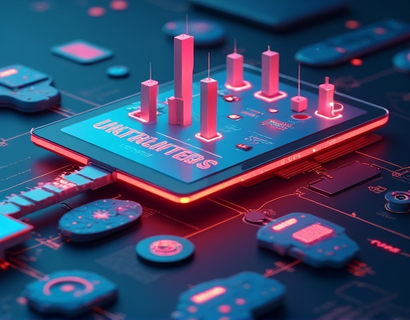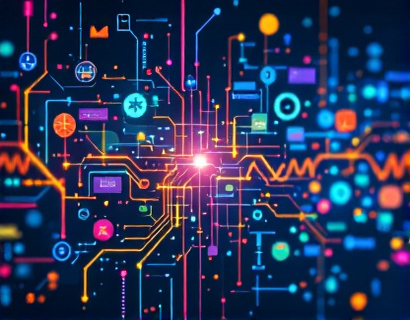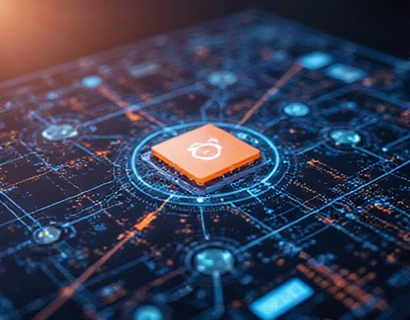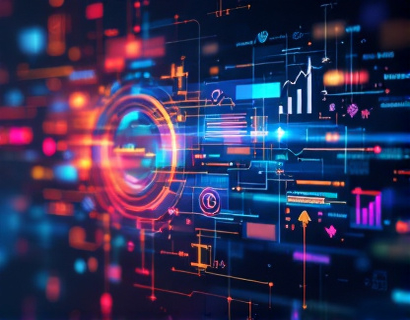Crypto AI Synergy: Empowering Digital Transformation with Advanced Tech Solutions
The intersection of cryptocurrency and artificial intelligence (AI) is giving rise to a new era of digital transformation. This synergy is not just a technological curiosity but a powerful force reshaping how we interact with digital systems and services. As tech professionals and early adopters, understanding this convergence is crucial for staying ahead in a rapidly evolving landscape. This article delves into the transformative impact of merging these advanced technologies, exploring how they are driving innovation and enhancing digital experiences.
The foundation of this synergy lies in the unique properties of blockchain technology, which underpins cryptocurrency, and the computational prowess of AI. Blockchain's decentralized, transparent, and secure nature provides an ideal platform for AI applications that require trust, integrity, and data privacy. Conversely, AI's ability to process vast amounts of data, learn from patterns, and make intelligent decisions complements blockchain's capabilities, creating a powerful combination.
Enhancing Security and Trust
One of the most significant benefits of integrating AI with cryptocurrency is the enhancement of security and trust in digital transactions. AI algorithms can detect and prevent fraudulent activities by analyzing patterns and anomalies in transaction data. This real-time monitoring and response capability significantly reduces the risk of cyber threats, making blockchain-based systems more robust and reliable. For instance, AI-driven smart contracts can automatically enforce and verify contract terms, ensuring that all parties adhere to agreed-upon conditions without the need for intermediaries.
Moreover, AI can improve the scalability and efficiency of blockchain networks. By optimizing consensus mechanisms and transaction processing, AI helps in managing the computational load and reducing energy consumption. This is particularly important as the adoption of blockchain technology grows, necessitating more sustainable and efficient solutions. The synergy between AI and cryptocurrency thus not only enhances security but also paves the way for more widespread and practical applications of blockchain.
Optimizing Data Management and Analysis
AI's strength in data management and analysis is another critical aspect of its synergy with cryptocurrency. Blockchain generates vast amounts of data, from transaction records to smart contract executions. AI algorithms can process and analyze this data to extract valuable insights, optimize operations, and inform strategic decisions. For example, predictive analytics can forecast market trends, helping investors make more informed choices. Additionally, AI can enhance the user experience by personalizing services based on individual preferences and behaviors.
The integration of AI in data management also improves the interoperability of different blockchain platforms. By standardizing data formats and protocols, AI facilitates seamless communication and data exchange between diverse systems. This interoperability is essential for building a cohesive and interconnected digital ecosystem, where different services and applications can work together harmoniously.
Innovative Application Development
The combination of AI and cryptocurrency is fostering the development of innovative applications that were previously unimaginable. Decentralized finance (DeFi) platforms, for instance, leverage AI to create more efficient and accessible financial services. AI-powered trading bots can execute complex strategies, manage risk, and optimize returns, making decentralized trading more viable for a broader audience. Similarly, AI-driven lending and borrowing platforms on blockchain can offer more transparent and fair financial products, reducing the need for traditional financial intermediaries.
Beyond finance, the synergy between AI and cryptocurrency is revolutionizing industries such as supply chain management, healthcare, and entertainment. In supply chain management, AI can track and verify the authenticity and origin of products using blockchain, ensuring transparency and reducing counterfeiting. In healthcare, AI can analyze medical data stored on blockchain to identify patterns and improve diagnostic accuracy, while ensuring patient data privacy. In entertainment, AI can create personalized content recommendations and manage digital rights management on blockchain, enhancing user experience and protecting creators' rights.
Empowering Developers and Users
The synergy between AI and cryptocurrency is also empowering developers and users alike. For developers, the integration of AI tools and frameworks with blockchain platforms provides new opportunities to build sophisticated and intelligent applications. Development environments and platforms are emerging that offer integrated AI capabilities, making it easier for developers to incorporate machine learning and other AI techniques into their blockchain projects. This democratization of advanced technologies lowers the barrier to entry and accelerates innovation.
For users, the combination of AI and cryptocurrency means more intuitive and user-friendly digital services. AI-driven interfaces can understand and respond to user needs more effectively, providing a seamless and personalized experience. Additionally, AI can enhance the accessibility of blockchain technologies, making them more approachable for non-technical users. For example, AI-powered chatbots and virtual assistants can guide users through complex blockchain operations, reducing the learning curve and increasing adoption.
Challenges and Considerations
Despite the numerous benefits, the synergy between AI and cryptocurrency is not without challenges. One of the primary concerns is the regulatory landscape. As both technologies operate in relatively uncharted territories, regulatory frameworks are still evolving. Ensuring compliance with existing laws and anticipating future regulations is crucial for the sustainable growth of AI-cryptocurrency applications. Additionally, the environmental impact of blockchain, particularly proof-of-work systems, remains a significant issue. AI can help mitigate this by optimizing energy usage and exploring more sustainable consensus mechanisms.
Another challenge is the technical complexity involved in integrating AI with blockchain. Developers need a deep understanding of both domains to create robust and efficient solutions. Education and training programs are essential to bridge the knowledge gap and foster a skilled workforce capable of harnessing this synergy. Furthermore, ensuring data privacy and security in AI-cryptocurrency systems is paramount. Robust encryption and privacy-preserving techniques must be employed to protect sensitive information.
Future Prospects
Looking ahead, the future of AI-cryptocurrency synergy is promising. As technology continues to advance, we can expect even more innovative applications and use cases. The convergence of AI, blockchain, and other emerging technologies like the Internet of Things (IoT) and 5G will create a more interconnected and intelligent digital world. Smart cities, autonomous vehicles, and decentralized autonomous organizations (DAOs) are just a few examples of how this synergy can transform various aspects of society.
Moreover, the adoption of AI-cryptocurrency solutions is likely to grow as businesses and individuals recognize their potential. The ability to create secure, transparent, and efficient digital systems will drive further innovation and investment. As the ecosystem matures, we can anticipate more standardized protocols, better tools, and a more robust infrastructure supporting AI-cryptocurrency applications.
In conclusion, the synergy between cryptocurrency and AI is a powerful force driving digital transformation. By enhancing security, optimizing data management, fostering innovative applications, and empowering developers and users, this combination is reshaping the digital landscape. As tech professionals and early adopters, embracing this synergy will be key to staying competitive and contributing to the next wave of technological advancements.




